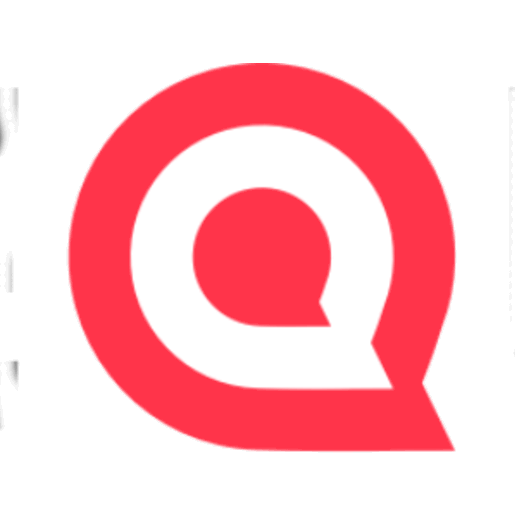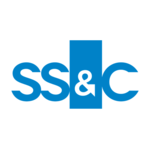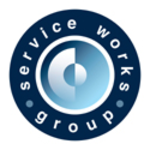Description

Asset Mapping

SeQure - Integrated Workplace
Comprehensive Overview: Asset Mapping vs SeQure - Integrated Workplace
Asset Mapping and SeQure - Integrated Workplace are two distinct products in the realm of workplace management and asset tracking, each catering to different needs within organizations. Let’s break down these two offerings in terms of their primary functions, target markets, market share, user base, and differentiating factors.
Asset Mapping
a) Primary Functions and Target Markets:
-
Primary Functions:
- Asset Mapping primarily focuses on real-time tracking and management of assets within a facility or across multiple locations.
- It provides features like asset tracking, predictive maintenance alerts, utilization analysis, and space management.
- The platform offers data visualization tools and dashboards to provide insights into asset performance and utilization.
-
Target Markets:
- Asset Mapping is typically targeted at industries such as manufacturing, healthcare, retail, and logistics, where asset management and optimization are crucial.
- It also appeals to facilities managers and building operations teams seeking to enhance operational efficiencies and reduce costs.
b) Market Share and User Base:
- Asset Mapping has carved out a niche within industries requiring detailed asset oversight and has a moderate market share in the asset management sector.
- It serves medium to large enterprises that need robust asset management capabilities but may have fewer users compared to broader workplace management solutions.
c) Key Differentiating Factors:
- The platform’s strength lies in its ability to integrate with IoT devices for real-time data capture and analysis.
- It emphasizes predictive maintenance and optimization of asset lifecycle, providing substantial ROI for asset-intensive industries.
- Asset Mapping stands out due to its ability to customize asset tracking and reporting based on specific industry needs.
SeQure - Integrated Workplace
a) Primary Functions and Target Markets:
-
Primary Functions:
- SeQure offers a comprehensive suite of tools designed for workplace safety, compliance, and management.
- Key features include space reservation systems, visitor management, safety and compliance monitoring, and employee experience enhancements.
- Its integrated approach combines workplace optimization with health and safety features.
-
Target Markets:
- SeQure targets a wide range of industries, including corporate offices, educational institutions, and government facilities.
- Its focus on safety and compliance makes it particularly appealing to organizations prioritizing workplace safety and regulatory adherence.
b) Market Share and User Base:
- SeQure's market share is significant within the integrated workplace management systems (IWMS) due to its comprehensive feature set.
- It enjoys a diverse user base, particularly among organizations with large office spaces and those needing to ensure compliance with health and safety regulations.
c) Key Differentiating Factors:
- SeQure distinguishes itself with its holistic approach to workplace management by integrating safety tools with day-to-day operational features.
- The platform's strength is its adaptability to the modern workspace, including remote work scenarios, and its focus on enhancing employee well-being and productivity.
- Its modular design allows companies to scale features based on their evolving needs, enhancing its appeal to a broad spectrum of organizations.
Comparative Analysis
- Market Positioning: While Asset Mapping is more specialized in asset management, especially in asset-heavy sectors, SeQure offers a broad spectrum of workplace management and safety solutions that cater to various organizational needs.
- Feature Set: Asset Mapping excels in real-time asset tracking and lifecycle management, whereas SeQure stands out with its comprehensive safety compliance and space management features.
- User Base Diversity: SeQure potentially attracts a more varied user base due to its broad application in workplace management, compared to Asset Mapping's focus on specific industries with significant asset management needs.
Overall, both products serve essential roles in workplace and asset management but cater to different priorities and industry needs. Organizations often choose between these products based on their specific operational challenges and objectives.
Contact Info

Year founded :
2012
+44 20 7060 6014
Not Available
United Kingdom
http://www.linkedin.com/company/asset-mapping

Year founded :
Not Available
Not Available
Not Available
Not Available
Not Available
Feature Similarity Breakdown: Asset Mapping, SeQure - Integrated Workplace
To provide a feature similarity breakdown for Asset Mapping and SeQure - Integrated Workplace, we'll look at the type of features typically associated with integrated workplace management systems (IWMS) and asset management solutions. While I don’t have specific proprietary details on each product, here's a general comparison based on common industry practices:
a) Core Features in Common
-
Asset Tracking and Management:
- Both platforms are likely to offer asset tracking and management capabilities. This includes monitoring the status, location, and maintenance schedules of assets within a facility.
-
Reporting and Analytics:
- Comprehensive reporting tools that provide insights into asset performance, utilization, and operational efficiency are common among both solutions.
-
Integration Capabilities:
- Ability to integrate with other enterprise systems (e.g., ERP, HR systems, IoT devices) to streamline data sharing and operational workflows.
-
User Access and Security Controls:
- Features that ensure secure access to the system with role-based permissions for different levels of users.
-
Maintenance Management:
- Tools for scheduling, tracking, and managing asset maintenance activities.
-
Mobile Accessibility:
- Access to features and functionalities via mobile devices, enabling on-the-go management and monitoring of assets.
b) User Interface Comparison
-
Asset Mapping:
- The platform might focus on a more visual representation of assets, emphasizing maps or spatial layouts to provide context on asset locations. The interface could be designed for easy navigation with a focus on visualization and real-time data accessibility.
-
SeQure - Integrated Workplace:
- This platform could offer a more integrated approach to workplace management, potentially incorporating a broader set of features beyond asset management, such as space utilization and employee collaboration. The user interface might be tailored for various workplace functions, offering dashboards that are customizable to different roles within an organization.
c) Unique Features
-
Asset Mapping:
- Could offer specialized features in mapping technologies, such as geospatial data integration or advanced visualization tools for physical environments, setting it apart in terms of spatial asset management.
-
SeQure - Integrated Workplace:
- Might feature advanced workplace management tools, such as space optimization, occupancy sensors, or employee engagement features, which aren't typically the primary focus of an asset management platform like Asset Mapping.
Conclusion
While there are core similarities in asset management capabilities, the differentiation largely comes from the focus and design of the user interfaces and the unique features each platform offers to address specific business needs. For detailed product-specific comparisons, it's best to consult product datasheets, user reviews, or directly engage with the respective companies for demonstrations.
Features

Reporting and Analytics
Asset Identification
Security and Compliance
Integration and Compatibility
Visualization Tools

Enhanced Productivity Tools
Data Security and Compliance
Seamless Collaboration
Best Fit Use Cases: Asset Mapping, SeQure - Integrated Workplace
Asset Mapping and SeQure - Integrated Workplace serve distinct purposes and are suitable for different types of businesses, projects, and scenarios. Here's a detailed look at their best fit use cases:
Asset Mapping
a) For what types of businesses or projects is Asset Mapping the best choice?
-
Facility Management Companies: Asset Mapping is ideal for facilities management where tracking and optimizing the use of assets like HVAC systems, lighting, and other infrastructure is critical.
-
Healthcare Facilities: Hospitals and clinics with numerous physical assets can leverage Asset Mapping to enhance maintenance schedules, improve asset utilization, and ensure compliance with healthcare regulations.
-
Manufacturing Plants: These facilities benefit from tracking machinery and equipment status, reducing downtime, and optimizing production lines through better asset management.
-
Smart Building Projects: Real estate developers and property management firms implementing smart building technologies can utilize Asset Mapping to track and control IoT-enabled infrastructure efficiently.
-
Utilities and Energy Providers: For companies in these sectors, Asset Mapping helps in monitoring extensive infrastructures such as pipelines, power lines, and metering equipment.
SeQure - Integrated Workplace
b) In what scenarios would SeQure - Integrated Workplace be the preferred option?
-
Corporate Offices: Large enterprises and corporate offices seeking to improve workplace safety, optimize space utilization, and enhance employee experience will find SeQure to be invaluable.
-
Educational Institutions: Universities and colleges can use SeQure to manage campus facilities efficiently, ensure compliance with health and safety regulations, and improve student and staff experience.
-
Remote and Hybrid Work Environments: Businesses transitioning to flexible work models can use SeQure to manage desk reservations, conference room bookings, and ensure adherence to social distancing.
-
Co-Working Spaces: Providers of shared office environments can utilize SeQure to manage memberships, optimize space, and improve customer satisfaction through seamless integrations and user experiences.
-
Event and Conference Venues: These venues can leverage SeQure for efficient space management, occupancy tracking, and ensuring compliance with safety regulations.
Industry Verticals and Company Sizes
d) How do these products cater to different industry verticals or company sizes?
-
Industry Verticals:
- Asset Mapping is versatile across industries like healthcare, manufacturing, utilities, and real estate, offering specific tools for asset tracking, maintenance management, and operational efficiency.
- SeQure - Integrated Workplace caters to corporate offices, educational institutions, and service-oriented environments, focusing on workplace safety, space optimization, and operational efficiency.
-
Company Sizes:
- Asset Mapping can be scaled for both medium-sized businesses and large enterprises that require robust asset tracking solutions. Smaller companies with fewer assets might not find full-scale deployment necessary but can benefit from its features for specific projects or assets.
- SeQure - Integrated Workplace is tailored to mid-size to large organizations with a significant number of employees and physical workspaces. It may be less relevant for very small businesses unless they operate in spaces that require efficient management of diverse resources.
Both products serve critical roles in enhancing operational efficiency and safety but do so with different focus areas, making them suitable for varying needs depending on the organization's structure, industry, and size.
Pricing

Pricing Not Available

Pricing Not Available
Metrics History
Metrics History
Comparing undefined across companies
Conclusion & Final Verdict: Asset Mapping vs SeQure - Integrated Workplace
When evaluating Asset Mapping and SeQure - Integrated Workplace, it is crucial to assess their value proposition, pros and cons, as well as specific recommendations to help users make informed decisions.
Conclusion and Final Verdict
a) Overall Value Proposition:
- Asset Mapping tends to offer better overall value for organizations heavily focused on asset tracking, operational efficiency, and infrastructure management due to its specialized tools that streamline asset management and facilitate real-time tracking.
- SeQure - Integrated Workplace provides excellent value for workplaces seeking a comprehensive solution to integrate facilities management, enhance collaboration, and improve overall workplace experience.
b) Pros and Cons:
Asset Mapping:
- Pros:
- Strong capabilities in real-time asset monitoring and management.
- Facilitates data-driven decision-making through detailed analytics and reports.
- Streamlines maintenance processes by automating alerts for maintenance needs.
- Cons:
- May lack comprehensive features for workplace collaboration and employee engagement.
- Could require significant customization and integration efforts for specific industries.
- Initial setup and data migration may be complex and time-consuming.
SeQure - Integrated Workplace:
- Pros:
- Offers a holistic approach to workplace management, including space management, employee engagement, and facilities services.
- Enhances communication and collaboration with integrated tools such as booking and scheduling systems.
- Intuitive interfaces that are user-friendly and encourage employee engagement.
- Cons:
- Might not be as robust for clients primarily focused on in-depth asset tracking and infrastructure maintenance.
- Some features may be underutilized in organizations with simpler workplace structures.
- The comprehensive nature of the platform can lead to higher costs and potential feature redundancy.
c) Specific Recommendations:
- For organizations primarily seeking to enhance asset-centric operations, including the maintenance and management of facilities and infrastructure, Asset Mapping is likely the better choice, as it excels in asset visibility and operational efficiencies.
- Companies that need an integrated platform to address broader workplace management needs, foster employee collaboration, and enhance workplace productivity should consider SeQure - Integrated Workplace. It efficiently balances operational tools with employee-focused features.
- Prospective users are encouraged to conduct a detailed needs assessment, reviewing current pain points, budget constraints, and future goals. Considering the alignment of each product’s features with organizational objectives will help in making an informed choice.
- Engaging in trial versions or pilot programs of each platform can provide hands-on experience and help determine user-friendliness, adaptability, and the practicality of each solution within the unique context of the users’ organization.
Ultimately, the decision between the two products should align with the organization's strategic goals, specific operational needs, and growth trajectory to ensure a solution that provides the maximum benefit.
Add to compare
Add similar companies



